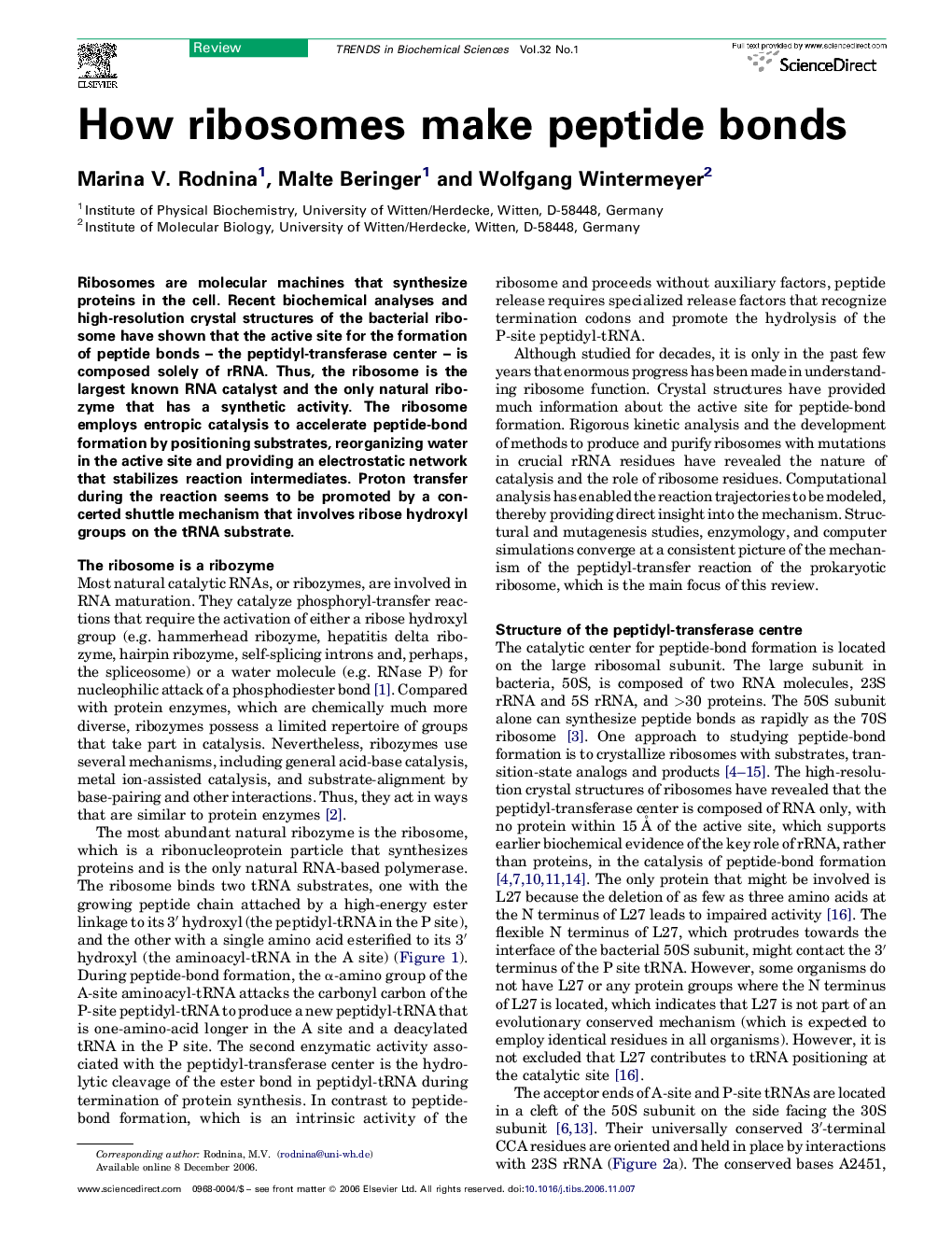| Article ID | Journal | Published Year | Pages | File Type |
|---|---|---|---|---|
| 2031794 | Trends in Biochemical Sciences | 2007 | 7 Pages |
Ribosomes are molecular machines that synthesize proteins in the cell. Recent biochemical analyses and high-resolution crystal structures of the bacterial ribosome have shown that the active site for the formation of peptide bonds – the peptidyl-transferase center – is composed solely of rRNA. Thus, the ribosome is the largest known RNA catalyst and the only natural ribozyme that has a synthetic activity. The ribosome employs entropic catalysis to accelerate peptide-bond formation by positioning substrates, reorganizing water in the active site and providing an electrostatic network that stabilizes reaction intermediates. Proton transfer during the reaction seems to be promoted by a concerted shuttle mechanism that involves ribose hydroxyl groups on the tRNA substrate.
